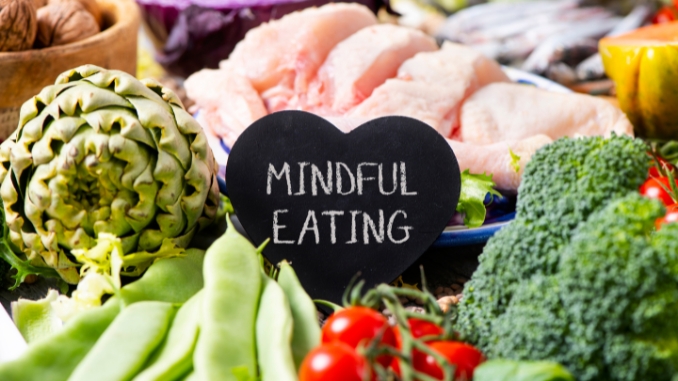Disclaimer: The content in this blog is for educational and informational objectives only and is not intended as medical advice. Eating habits and dietary needs vary greatly among individuals, and what may be beneficial for one person may not be suitable for another.
The eating practices mentioned in the article are based on information gathered from credible online sources, such as studies and research. It’s important to note that while such resources can provide valuable insights, they may not capture the full complexity and nuances of dietary habits across different cultures.
Always consider consulting with medical experts and individuals from the respective cultures for a more in-depth understanding of different eating practices.
Eating is an important activity. It’s not just for sustenance but also as a profound cultural, social, and emotional experience. Whether you’re in a busy city like Tokyo or a quiet town in Italy, the way people eat is different everywhere.
Each with its own set of rules, stigmas, and taboos. What’s more, is that food isn’t just about staying full; it’s about sharing traditions, beliefs, and cultural practices in society.
In this article, we’ll discuss how different types of eating affect our health and happiness. We’ll look at everything from old-fashioned eating traditions, to newer ideas like what and how we eat.
Each types of eating teaches us something special about taking care of our bodies and minds. Let’s explore the different types of eating and how they impact our lives.
The Different Types of Eating
Food plays a central role in shaping cultural identity and preserving heritage. Traditional dishes are often symbolic, representing a community’s history, values, and way of life. Sharing meals with family and friends is the cornerstone of many cultures.
It fosters a sense of belonging and also helps strengthen social bonds. In some societies, specific foods are reserved for special occasions or ceremonies. This highlights the prevalent significance of food in many cultural traditions.
1. Traditional Eating

Different cultures have their own special ways of eating [1] that come from where they live, their beliefs, and what they’ve done in the past. For many cultures, meals aren’t just about fuel eating; they’re about following special customs that families have done for a long time.
People often use ingredients from nearby and pick foods that are in season, which shows their care for nature and their surroundings. Here are a few examples of how different cultures eat in special ways:
- Japaneses Washoku – Washoku is the traditional food of Japan. It’s known for using fresh ingredients that are in season, making meals look nice, and having a good mix of flavors. Japanese meals usually have rice, seafood, veggies, and fermented foods like soy sauce and miso, which are also important parts of Japan’s cooking history.
The combination of nutritious foods, mindful eating practices, and cultural rituals associated with Washoku can lead to improved health outcomes and greater overall happiness. - Italian Family Dinners – In Italy, family dinners are a cherished tradition. It’s where multiple generations gather to share homemade meals and life stories, making it a fun eating experience.
Italian cuisine emphasizes fresh, local ingredients and often includes pasta, risotto, seafood, and meats. Meals are enjoyed leisurely, with emphasis on conversation and connection. - British Afternoon Tea – Afternoon tea is a classic British tradition from the 1800s. It typically consists of tea served with large quantities of sandwiches, scones, and assorted pastries. Afternoon tea is often seen as a social gathering, providing an opportunity for conversation and relaxation.
- Indian Thali – In India, the Thali is a traditional meal with various dishes served on a single platter. It typically includes rice or bread, dal, vegetables, yogurt, chutney, and sweets.
This showcases the diverse flavors and spices of Indian cuisine. As their dishes were made to fill the soul and leave you feeling healthy and full. - Chinese Dim Sum – Dim sum is a popular Cantonese tradition that involves serving bite-sized portions of steamed, fried, or baked dumplings and other small dishes.
It’s often enjoyed as a brunch or lunch meal. Chinese diners have a variety of options passed around on carts or ordered from a menu. This creates a communal dining experience.
2. Mindful Eating

Mindful eating is a practice that involves bringing full awareness and attention to the experience of eating. It encompasses being present at the moment and paying attention to the sensory aspects of food. Also, acknowledging one’s thoughts, feelings, and bodily sensations related to eating.
It is all about avoiding weight gain, managing weight loss, and maximizing food’s nutritional value. It also helps in preventing incidents such as choking and allergic reactions to certain dishes.
How to Practice Mindful Eating:

- Eat Slowly: Take your time to chew each bite thoroughly and engage in ‘joy eating’. This helps prevent accidents such as choking or breaking your teeth from chewing too hard.
- More Attention to Hunger: Tune into your body’s hunger and fullness signals. Only eat when you’re moderately hungry and stop when you’re satisfied but not too full.
- Engage your Senses: Notice the colors, textures, tastes, and smells of your food as you eat. Fully immerse yourself in the sensory experience and not just consume blindly.
- Listening To Your Body: Be mindful of how different foods make you feel physically and emotionally, and make choices that nourish and support your well-being.
3. Emotional Eating

This another types of eating consumes food in response to emotional cues. These cues include stress, boredom, sadness, or loneliness rather than physical hunger.
Emotional eaters are, by a variety of factors, deeply intertwined with psychological factors, including:
- Stressful life events – Stressful life events include job loss, relationship problems, and financial difficulties. Even major life transitions can significantly impact individuals’ emotional well-being.
In response to stress, some individuals may turn to food for distraction or comfort, seeking temporary relief from the overwhelming emotions associated with challenging circumstances. - Unresolved issues – Unresolved emotional matters from the past, such as trauma, grief, or interpersonal conflicts, can linger and manifest in emotional eating behaviors. Food may serve as a means of self-soothing or numbing painful emotions that have not been adequately addressed or processed.
- Boredom/Monotony – Feelings of boredom or monotony can also lead to a desire for stimulation or excitement. This prompts people to turn to food as a source of pleasure or entertainment. Eating can temporarily distract from feelings of boredom and fill a void in individuals’ lives when they lack meaningful activities or interests.
- Social Pressures – Social pressures, including societal norms, cultural expectations, and peer influence, can also contribute to emotional eating behaviors.
For example, social gatherings or events centered around food may trigger individuals to overeat. It may also cause them to conform to social norms or avoid feeling left out or judged by others. - Low Self-Esteem – Low self-esteem and negative body image can fuel emotional eating habits. People may use food as a way to cope with feelings of inadequacy or to seek temporary comfort or validation.
Emotional eating may temporarily boost self-esteem by providing a sense of pleasure or satisfaction, albeit at the expense of long-term health and well-being.
However, for those struggling with emotional eating, here are some strategies to try instead:

- Awareness and Identification: Recognize when you are eating due to emotions rather than hunger. Keep a journal to track what triggers your emotional eating episodes.
- Find Alternative Coping Mechanisms: Instead of turning to food, develop alternative ways to cope with emotions, such as exercise, journaling, talking to a friend, practicing relaxation techniques like deep breathing or meditation, or engaging in a hobby.
- Create a Supportive Environment: Surround yourself with supportive people who understand your goals and can help you stay on track. This could be friends, family, or a support group.
- Mindful Eating: Practice mindful eating [2] by paying attention to the sensations of eating and focusing on your food. This can help you distinguish between physical hunger and emotional cravings.
- Address Underlying Emotions: Work on addressing the underlying emotions that trigger your emotional eating. This may involve therapy or also counseling to help you develop healthier coping mechanisms.
- Seek Professional Help if Needed: If emotional eating is significantly impacting your life and you find it difficult to manage on your own, consider seeking help from a therapist or counselor who specializes in eating disorders or emotional health.
4. Intuitive Eating

Intuitive eating is a philosophy of eating that encourages individuals to listen to their body’s natural hunger. Instead of relying on external rules or restrictions. It emphasizes a mindful and non-diet approach to eating, promoting a healthy relationship with one’s body while eating foods.
Letting go of dieting and other restrictive habits helps people to have a more balanced approach to food unless it is a medical condition.
Here are some ways to practice intuitive eating:
- Reject Diet Culture: Challenge dieting beliefs and practices that promote restrictive eating and body dissatisfaction. Embrace the principles of intuitive eating as a healthier and more sustainable approach to nourishing oneself.
- Acknowledge Hunger Cues: Practice mindful eating by paying attention to the physical feelings of hunger and honoring your body’s hunger signals with nourishing food choices.
- Eat Without Distractions: Minimize distractions during meals, such as electronic devices or work-related activities, to fully focus on the eating experience and listen to your body’s cues of satisfaction.
- Eat How and What You Want: Let go of guilt and judgment around food choices, and allow yourself to enjoy a wide variety of foods without restriction or deprivation. Be sure not to overeat or mistake freedom of choice for undisciplined eating.
- Avoid Coping with Food: Develop alternative coping strategies for managing emotions and non-hunger triggers for eating such as journaling, talking to a friend, or engaging in enjoyable activities.
5. Social Eating

Social eating is another types of eating in which social factors that play a significant role in shaping individuals’ eating behaviors and food choices.
Human beings are inherently social creatures, and food has long served as a central component of social interaction, communication, and cultural rituals.
- Social Gatherings – Social gatherings, such as parties, dinners, and picnics, often revolve around food and eating. In these settings, individuals may feel pressure to conform to social norms regarding food choices and portion sizes, which leads to overeating or indulging in unhealthy eating habits.
Additionally, the presence of others can influence individuals’ eating pace and patterns, with some people eating more or less than they typically would in social settings. - Rituals – Eating rituals, such as family meals, religious ceremonies, and cultural traditions, can profoundly influence how individuals eat and their behaviors.
These rituals often provide a sense of structure and meaning to mealtime, promoting social cohesion and reinforcing cultural identity through shared food experiences.
- Celebrations – Celebratory occasions, such as weddings, birthdays, and holidays, are often marked by special meals and festive foods. These celebrations may involve traditional dishes and cultural customs that hold symbolic significance.
Reinforcing the social importance of food in bringing people together is also one of the entire points of celebrations.
6. Disordered Eating

Disordered eating refers to a wide range of medical complications that may not meet the diagnostic criteria for a specific eating disorder. However, it may still have a negative impact on an individual’s physical and psychological well-being.
This can include restrictive eating patterns, compulsive overeating, binge eating, purging behaviors, and other unhealthy food-related behaviors. Disordered eating is prevalent across all age groups and genders and can affect individuals from diverse backgrounds.
According to research, disordered eating behaviors are common, with estimates suggesting that many people may engage in such behaviors during their lifetime.
Here are the most common types of eating disorders:
- Bulimia Nervosa – Bulimia nervosa involves periodic episodes [3] of binge eating followed by compensatory behaviors. Behaviors such as self-inducing vomiting, misuse of laxatives or diuretics, fasting, or excessive exercise.
Unlike individuals with anorexia, those with bulimia may maintain a normal body weight, making it harder to detect the disorder. Common symptoms include feelings of lack of control during binge episodes, shame or guilt about eating behaviors, and secretive behavior around food. - Binge-Eating Disorder – Binge-eating is a serious disorder characterized by a cycle of binge eating [4], during which individuals are “fog eating” or “storm eating”. This means individuals consume large amounts of food in a short period of time while feeling a sense of loss of control.
Unlike bulimia, there are no regular offsetting behaviors following binge episodes. Individuals with binge-eating disorder often experience feelings of guilt, shame, or distress after eating. They may use food as a coping mechanism to deal with emotional distress.
Conclusion
Understanding the spectrum of eating behaviors and types of eating allows us to appreciate the multifaceted nature of our relationship with food and empowers us to make informed choices that support our holistic well-being.
By embracing the diversity of eating behaviors, types of eating, practicing mindfulness, and cultivating self-awareness in our approach to eating, we can nourish not only our bodies but also our souls. This positive shift in our relationship with food can lead to a more fulfilling connection to both food and the community.
Do you want to know how common delicious foods can beat serious diseases and physical conditions while slimming down your waistline naturally, in the comfort of your own? Check out this Best Foods that Rapidly Slim and Heal in 7 Days!


Rick Kaselj MS, is a leading kinesiologist and injury specialist as well as co-creator of the best-selling Unlock Your Hip Flexors program. Rick creates exercise programs that help people heal injuries and eliminate pain, so they can go back to living a full, active, healthy life.



